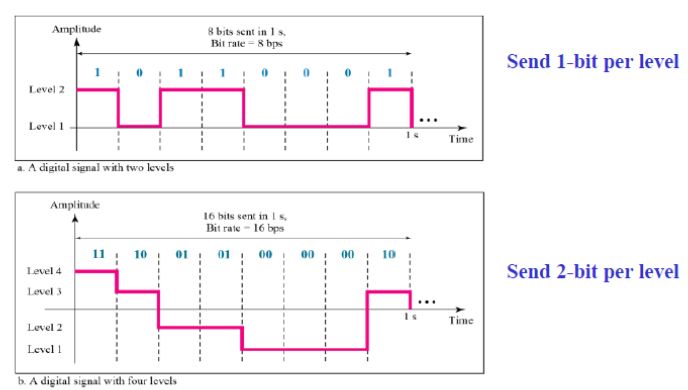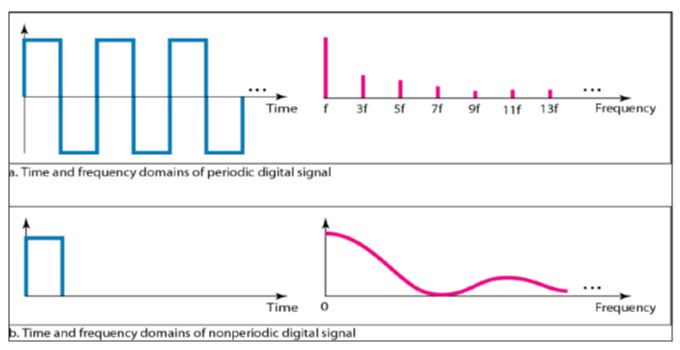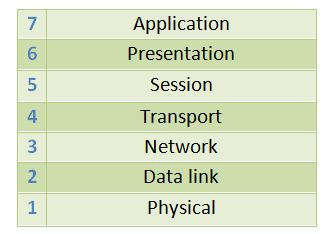Digital Signals
Information can also be represented by a digital signal. For example, a 1 can be encoded as a positive voltage and a 0 as zero voltage. A digital signal can have more than two levels. In this case, we can as zero voltage. A digital signal can have more than two levels. In this case, we can send more than 1 bit for each level. The following figure shows two signals, one with two levels and the other with four. In general, if a signal has L levels, each level needs log2L bits.
You May Also Like:
Fundamentals of Data and Signals
Composite Signals
Different Methods for Digital Signal Transmission

Bit Rate:
The bit rate is the number of bits sent in Is, expressed in bits per second (bps).
The Bit Rate for the above diagram is 8bps and 16bps.
Bit Length:
The bit length is the distance one bit occupies on the transmission medium.
Bit length =propagation speed x bit duration
Digital Signal as a Composite Analog Signal:
Based on Fourier analysis, a digital signal is a composite analog signal. The bandwidth is infinite.
A digital signal, in the time domain, comprises connected vertical and horizontal line segments. A vertical line in the time domain means a frequency of infinity (sudden change in time); a horizontal line in the time domain means a frequency of zero (no change in time). Going from a frequency of zero to a frequency of infinity (and vice versa) implies all frequencies in between are part of the domain.

Fourier analysis can be used to decompose a digital signal. If the digital signal is periodic, which is rare in data communications, the decomposed signal has a frequency domain representation with an infinite bandwidth and discrete frequencies. If the digital signal is non-periodic, the decomposed signal still has an infinite bandwidth, but the frequencies are continuous.
You May Also Like:
Transmission Impairment
Different Criteria for Performance of Networks
Back to DCN Questions and Answers




